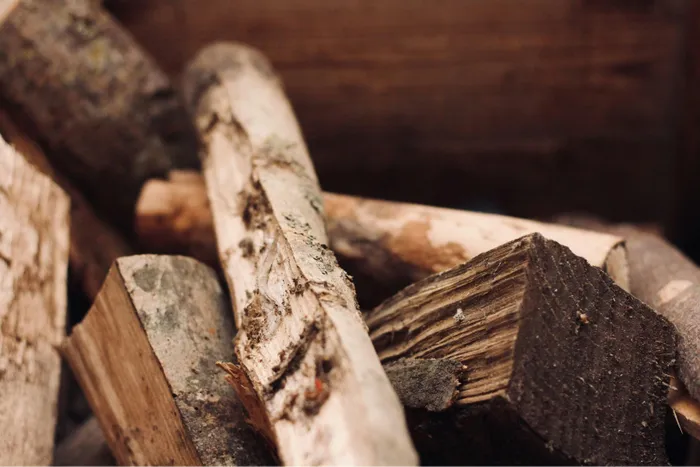Despite increased access to the power grid, most rural homes still rely on wood for energy

Firewood is still a dominant energy source in rural areas.
Image: Sven Brandsma / Unsplash
South Africa’s electrification drive has reduced household reliance on fuel such as firewood for heating, cooking, and lighting, although this source of energy remains dominant in rural areas.
Biofuels accounted for half of household energy requirements, such as for heating, cooking and lighting in 2021 yet decreased by 2023 as electrification expanded across the country – despite persistent loadshedding. It defines biofuels as plant material, animal waste and municipal waste.
Statistics South Africa research, one being a recently released Statistics South Africa survey that tracked the “ebb and flow of energy in South Africa” between 2015 and 2021, and the other the latest General Household Survey, provides deep insight into power supply sources across the country.
Its research, coupled with that of one from Rhodes University, shows that there is still a heavy reliance on firewood as a source of energy for those South Africans living in rural areas.
A paper from the Department of Environmental Science at Rhodes University, published in September 2022, indicated that 7.5% of all households use fuelwood as their primary energy source for cooking.
The Rhodes paper stated that rural households, in particular, have a higher reliance on wood. It noted that local level studies show that the reliance on wood is consistently above 70% of rural households – which comprise 32% of the national population of 63 million.
Statistics South Africa’s figures back this up. Statistics South Africa’s latest General Household Survey showed that wood was the second most popular source of energy, after electricity, used for cooking in Limpopo, Mpumalanga, North West, Eastern Cape and KwaZulu-Natal.
However, government has been expanding electricity access. In May last year, the South African Government News Agency reported that 94% of the population had electricity. This contrasts with the 1987 figure, at which point less than 13 million people were connected to the grid, and most of these homes were for whites.
Yet, Statistics South Africa noted that electricity supply showed a declining trend from 2015 to 2021 due to the severe constraints experienced in the generation of electricity. A partnership between government and the private sector is working on a solution to solve the power crisis, with electricity supply being more of less stable for the past year.
In general, coal provided the bulk of South Africa’s energy supply in 2021, with most of this fossil fuel locally produced by the mining industry. “The electricity, gas and steam supply industry was the biggest user, relying heavily on coal to generate electricity,” Statistics South Africa noted.
Coal is a dominant component of South Africa’s energy product exports to the rest of the world, accounting for 92% of total energy exports in 2021, the agency said.
Most oil is imported, as the country’s ability to produce this fuel, such as petrol and diesel has weakened over the years. “Local production declined notably between 2015 and 2021, mainly due to supply constraints caused by the closure of local oil refineries.,” said Statistics South Africa. Imports took up some of the slack, increasing in the 2016 to 2019 period. This was followed by a decrease in 2020 and 2021 during the COVID-19 pandemic.
Oil and related imports account for almost 80% of all energy sources brought into South Africa as of 2021, the agency said.
Related Topics:
